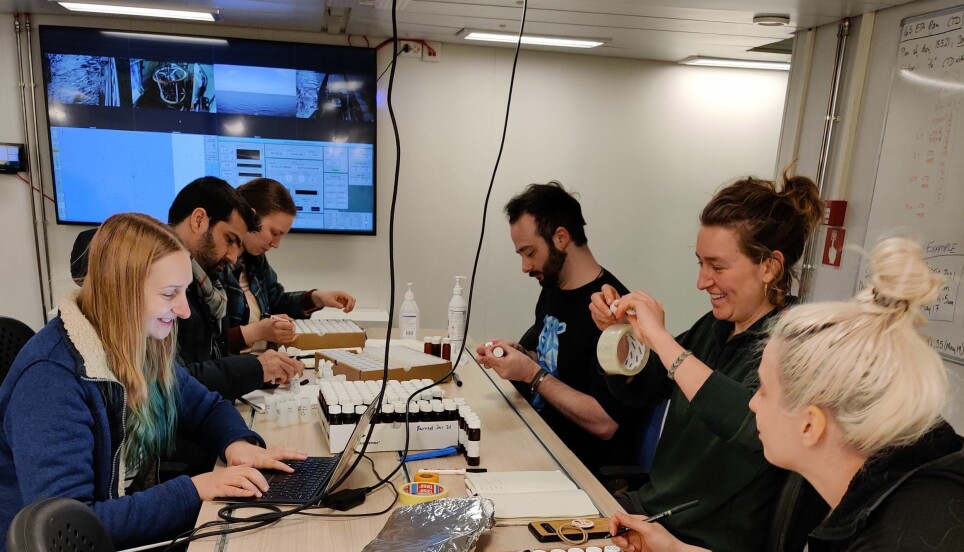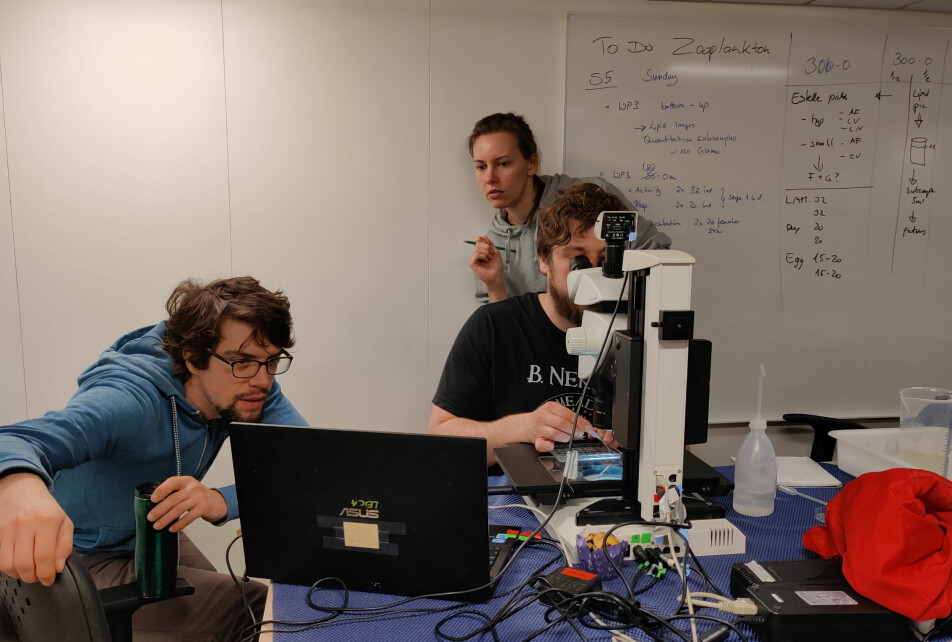
Departure into the known unknown
We left port in Tromsø on May 14th. Finally, after 10 days in isolation and meeting other cruise participants only as small faces on a video screen, we were released onto Helmer Hanssen, our home for the next nine days.
We left port in Tromsø on May 14 th. Finally, after 10 days in isolation and meeting other cruise participants only as small faces on a video screen, we were released onto Helmer Hanssen, our home for the next nine days.
Our science team of 22 is heading now into the Known Unknowns. Known as we had spent many days in preparation for this expedition, reading publications on the Polar Front, its hydrography, animal and plant life, food web interactions and needed methodologies. Known as some of us have previous experience working in Polar Seas– but there still remain the Unknowns we aim to resolve like the current status of the Polar Front. Within the next nine days we will resolve parts of the puzzle on how active the water suspended microalgae and ocean animal will be and how the front causes separation between the communities living in the water and the sea floor. Our success will depend not only on our own abilities but also the local weather and ice conditions, which can make work hard to impossible at times.

The student participants onboard Helmer Hanssen are also heading into their own Unknowns, as for many this is their first cruise onboard a research vessel into Arctic waters. The PhD level teaching component, organized through ARCTOS and UiT, attracted 15 early career scientists from Norwegian, UK and US universities with widely ranging interests from remote sensing, ocean physics to marine mammal acoustics. All students will get experience in all tools and approaches we are using, whether it is algal activity measurements or the study of benthic macrofauna. This unique experience will provide them with a chance to be trained in Arctic Systems Science, a holistic view looking at interconnections between different components of the living and non-living parts of the Barents Sea. The ability to talk and interact across science disciplines is in our view an essential tool to address the challenging science and management questions regarding the Barents Sea climate change impacts.
The expedition offers all of us also an amazing culture experience, as our science team onboard is highly international with participant nationalities including Brazil, Canada, China, Cyprus, Denmark, France, Finland, Germany, Iran, Norway, Pakistan, Philippines, Switzerland, UK, and USA. The combination of home institutions and diversity of nationalities allows all participants to further build their network of scientific connections and culture experiences – both important attributes for successful career and personal growth.
We are still in the unpacking stage, setting up the laboratories, testing sensors and equipment and looking at the first samples. The pile of full transport containers is slowly getting smaller and the lab space onboard Helmer Hanssen looks more and more like being ready for the first station. The calm seas are helping us to work smoothly along the preparation phase. Soon the first data will be collected, exploring the so far Unknowns and increasing the Knowns.







